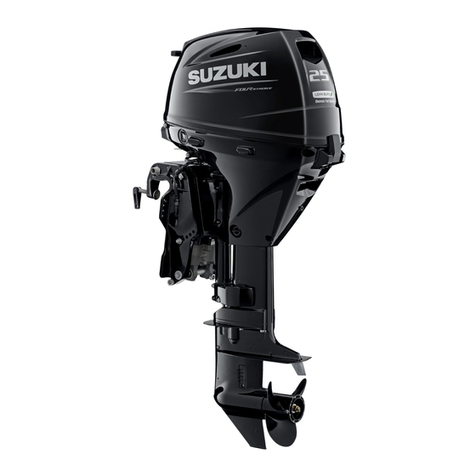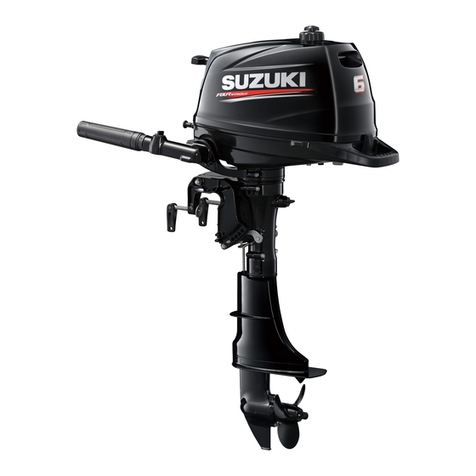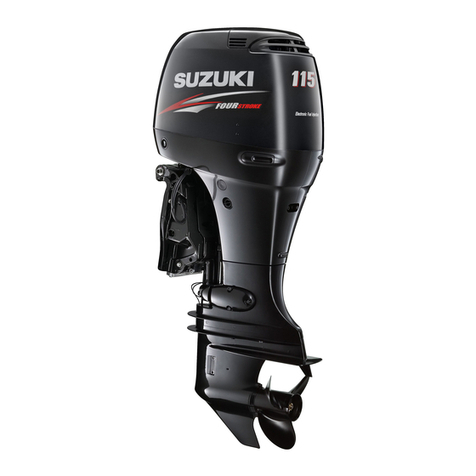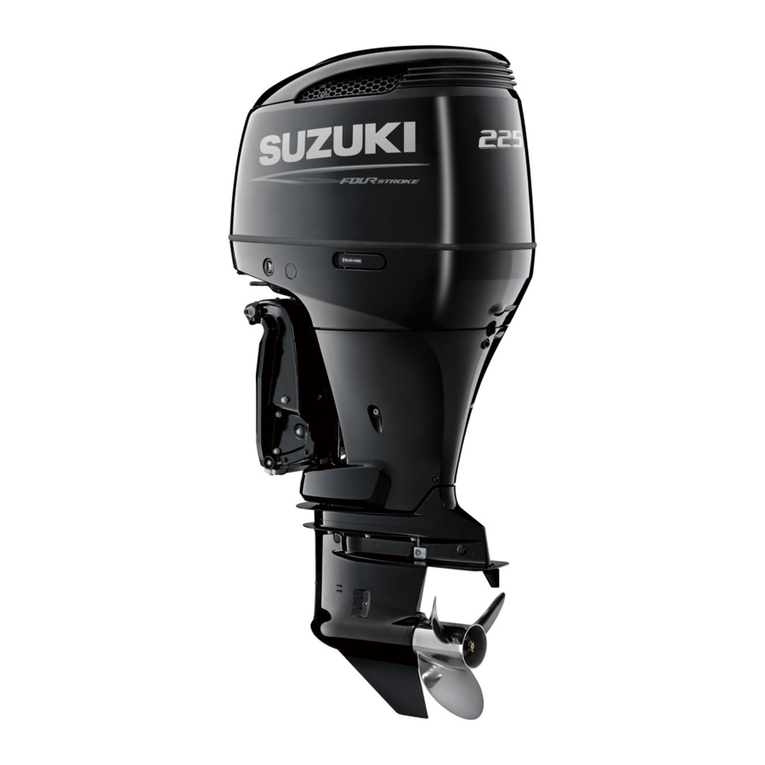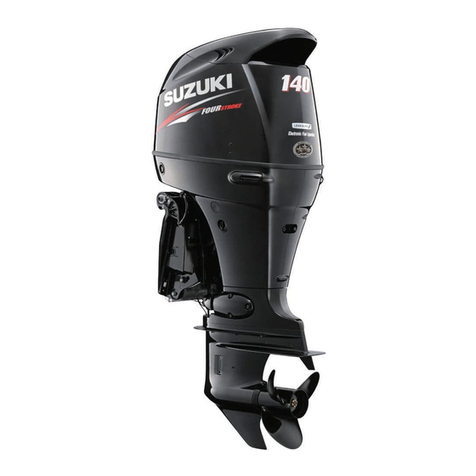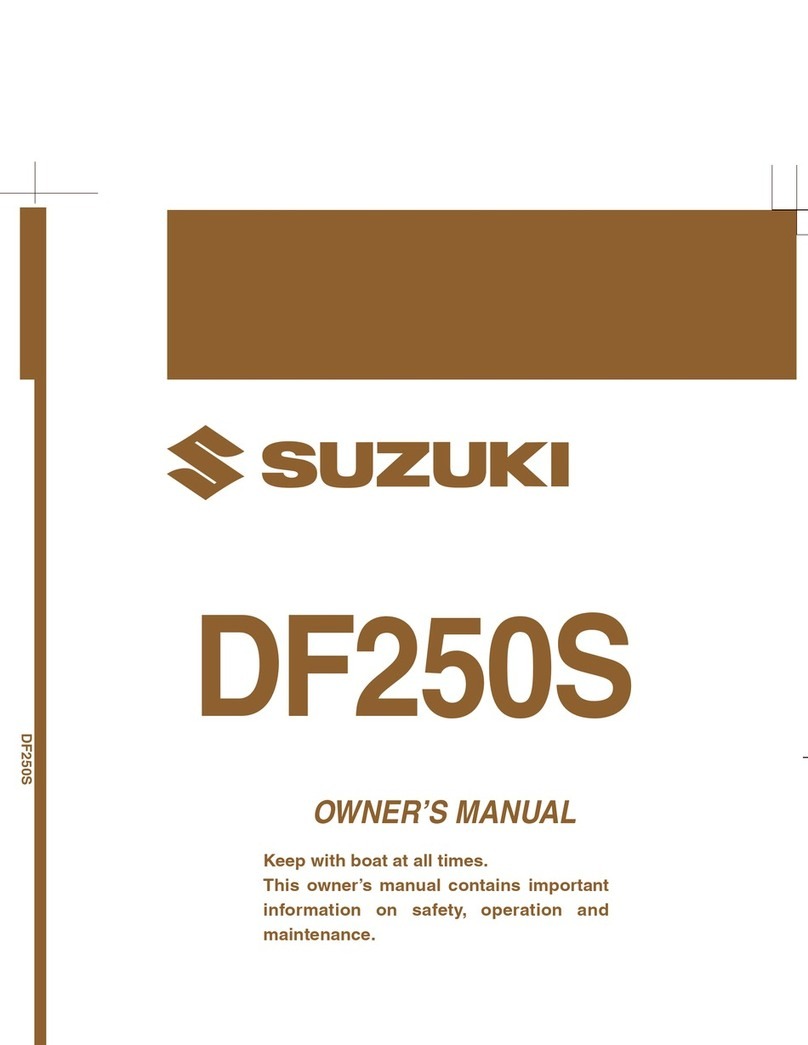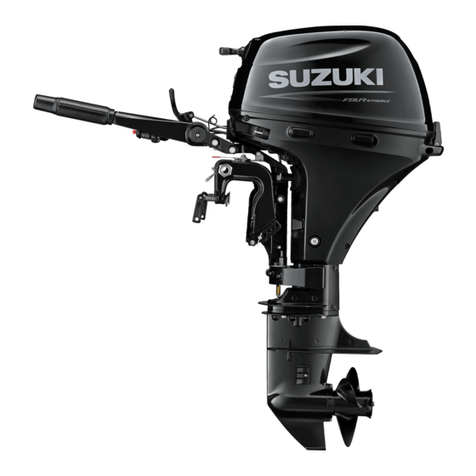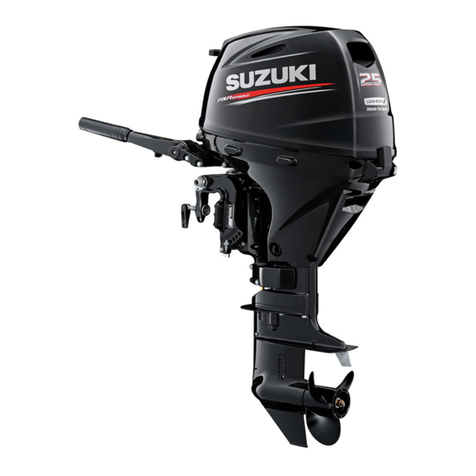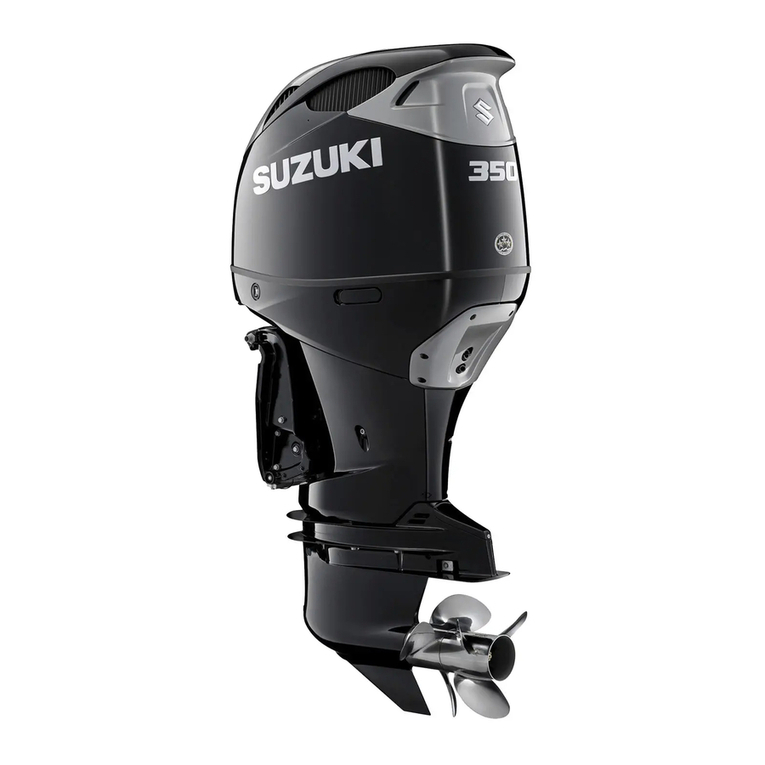
5
TABLE OF CONTENTS
FUEL AND OIL....................................... 6
GASOLINE............................................ 6
FILLING THE FUEL TANK ................... 7
ENGINE OIL.......................................... 8
GEAR OIL ............................................. 8
LOCATION OF SAFETY LABELS ..... 9
LOCATION OF PARTS....................... 11
MOTOR INSTALLATION .................. 12
BATTERY INSTALLATION .............. 12
BATTERY REQUIREMENT ................ 12
BATTERY INSTALLATION ................ 13
USE OF ELECTRICAL
ACCESSORIES................................... 14
PROPELLER SELECTION AND
INSTALLATION................................... 14
PROPELLER SELECTION ................. 14
PROPELLER INSTALLATION ........... 15
ADJUSTMENTS.................................... 15
TRIM ANGLE ADJUSTMENT............. 15
TRIM TAB ADJUSTMENT.................. 16
THROTTLE TENSION
ADJUSTMENT .................................... 17
IDLE SPEED ADJUSTMENT.............. 17
SETTING OF TILT UPPER LIMIT
POSITION............................................ 17
MOTOR COVER FASTENING
ADJUSTMENT .................................... 18
CAUTION SYSTEM ............................. 19
INDICATOR CHECK........................... 19
OVER-REVOLUTION CAUTION
SYSTEM.............................................. 20
OIL PRESSURE CAUTION
SYSTEM.............................................. 20
COOLING WATER CAUTION
SYSTEM.............................................. 21
BATTERY VOLTAGE CAUTION
SYSTEM.............................................. 22
DIAGNOSTIC SYSTEM ...................... 23
OIL CHANGE REMINDER SYSTEM
.. 23
SYSTEM ACTIVATION....................... 23
CANCELLATION ................................ 23
ENGINE STALLING CAUTION
SYSTEM................................................. 24
OPERATION OF TILTING
SYSTEMS............................................... 25
POWER TRIM AND TILT.................... 25
MANUAL TILTING .............................. 25
TILT LEVER ........................................ 26
INSPECTION BEFORE BOATING ... 27
BREAK-IN ............................................. 29
OPERATION ......................................... 30
BEFORE ATTEMPTING TO START
THE ENGINE....................................... 30
STARTING THE ENGINE ................... 31
EMERGENCY STARTING .................. 33
SHIFTING AND SPEED CONTROL ... 34
STOPPING THE ENGINE ................... 35
MOORING ........................................... 36
OPERATION IN SHALLOW
WATER................................................ 37
OPERATING THE TROLL MODE
(Optional Item) ................................... 37
OPERATION IN SALT WATER .......... 38
OPERATION IN FREEZING
WEATHER........................................... 38
MOTOR REMOVAL AND
TRANSPORTING ................................. 39
MOTOR REMOVAL ............................ 39
MOTOR TRANSPORTING.................. 39
TRAILERING ....................................... 40
INSPECTION AND
MAINTENANCE................................... 41
MAINTENANCE SCHEDULE ............. 41
SPARK PLUG ..................................... 43
BREATHER AND FUEL LINE ............ 44
ENGINE OIL........................................ 45
GEAR OIL ........................................... 46
LUBRICATION.................................... 47
CORROSION PREVENTION .............. 48
ANODES.............................................. 48
BONDING WIRES ............................... 49
BATTERY............................................ 49
ENGINE OIL FILTER .......................... 50
FUEL FILTER...................................... 50
FLUSHING THE WATER
PASSAGES............................................. 51
SUBMERGED MOTOR ....................... 53
STORAGE PROCEDURE ................... 54
MOTOR STORAGE............................. 54
BATTERY STORAGE......................... 55
AFTER STORAGE ............................... 56
GENERAL INFORMATION............... 56
WARRANTIES (For U.S.A)................. 56
IDENTIFICATION NUMBER
LOCATION.......................................... 56
EMISSION CONTROL
INFORMATION.................................... 57
TROUBLESHOOTING ........................ 57
SPECIFICATIONS ............................... 59
CHART OF TOTAL OPERATING
HOURS INDICATION ......................... 59
FLOWCHART OF OIL CHANGE
REMINDER SYSTEM.......................... 60
